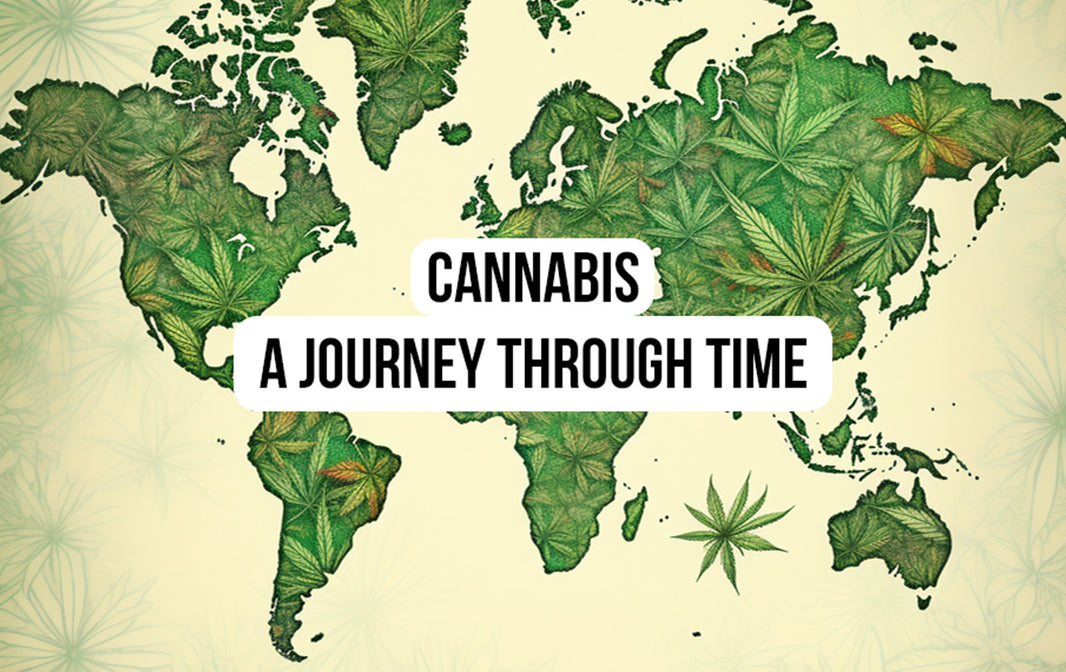Cannabis, a plant with a rich and storied history, has captivated human cultures for centuries. From its humble beginnings to its widespread cultivation, cannabis has been an integral part of human civilization. In this blog, we will embark on a journey through time, exploring the ancient origins of cannabis and tracing the pivotal moments when humans first started cultivating this remarkable plant.

The story of cannabis begins thousands of years ago in Central Asia. This beloved plant also known as hemp or marijuana, originated about 28 million years ago in the eastern Tibetan Plateau, as per a pollen study published in May of 2019. A trio of researchers from the University of Vermont, Middlebury College and the University of Nottingham in Ningbo China have published their findings in the Journal of Vegetation History and Archaeobotany. It shares a close botanical relationship with the common hop used in beer production and can still be found growing naturally across Central Asia.
Archaeological evidence suggests that humans had a relationship with cannabis since pre-Neolithic times. Cannabis has been cultivated in Japan since the pre-neolithic period for fibres and as a food (possibly for its psychoactive effects as well). An archeological site in the Oki Islands near Japan contained Cannabis achenes from around 8000BC.
Early civilizations discovered the plant's versatile uses, the intentional cultivation of the plant took root during specific historical periods. Around 4,000 years ago, in what is now known as modern-day China, the cultivation of cannabis became more systematic. The Chinese discovered that selectively breeding plants with desirable traits could yield more potent fibers and medicinal properties. It wasn’t long before Cannabis became a profitable crop and made its way along the Silk Road.

Cultivation practices evolved and neighboring civilizations began to adopt them. It also found a special place in the traditions and rituals of various ancient cultures. In India for example, cannabis is one of the most sacred plants and is associated with Shiva. It’s even written in the fourth Veda that Cannabis relieves anxiety.
The Scythians, a nomadic people from Central Asia, were known to cultivate cannabis and use it for a variety of purposes, including its psychoactive effects. They are thought to have brought cannabis west from Asia to the Middle east and what is now south east Russia. From there Germanic tribes, Vikings and Anglo-Saxon armies would spread Cannabis throughout the rest of Europe during the first 5 centuries AD.
Cannabis is thought to have been introduced to Africa at least 1000 years ago, primarily through the East coast Via Madagascar and through the Mediterranean coastline. Evidence suggests that Indian and Hindu travelers landed on the east coast of Africa and traded with Bantu settlers, subsequently introducing it to southern Africa when they migrated southward.

Around 1000 AD the use of Hashish began to spill over from the Persian world to the Arab world. Cannabis is said to have been introduced to Iraq in 1230 AD by the entourage of Bahraini rulers visiting Iraq. Around the same time, it was introduced to Egypt by “Mystic Islamic travelers” from Syria. Interestingly smoking did not become common until the introduction of tobacco, so up to the 1500s in the Muslim world hashish was consumed as an edible. However different cultures had their preferred way to consume it. Not far away in Ethiopia, ancient pipes have been unearthed containing cannabis residue, carbon dated to about 1320 AD.
Once colonial times came hemp was a well established and very important crop for European sailors. It was through the slave trade in the 16th century that cannabis appears in Brazil for the first time enroute from Angola. There after it was grown in the Amazon and became known as the “opium of the poor”. Indigenous people rapidly adopted it, as they already had a strong tradition of using a variety of hallucinogens and were skilled at growing it. From there it made its way to central America and up, with a little help from King Philip of Spain. In 1564 he ordered cannabis to be grown throughout his empire from Argentina to Oregon.

The journey of cannabis from its ancient origins to modern cultivation is a testament to the deep-rooted connection between humans and plants. Throughout history, cannabis has woven itself into the fabric of societies, shaping traditions, religious practices, and even influencing the course of human civilization. As we continue to explore the potential of this remarkable plant, it is important to reflect on its rich history and the role it has played in our collective story.
In understanding the past, we can appreciate the present and look toward a future where cannabis continues to inspire and benefit humanity.






